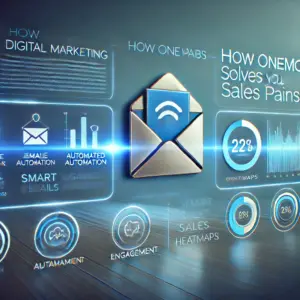Understanding Landing Pages
A landing page is a standalone web page, created specifically for a marketing or advertising campaign. It’s where a visitor “lands” after they click on a link in an email, or ads from Google, Bing, YouTube, Facebook, Instagram, Twitter, or similar places on the web. Unlike web pages, which typically have many goals and encourage exploration, landing pages are designed with a single focus or goal, known as a call to action (CTA). It’s interesting to note that the simplicity and focus of landing pages can significantly enhance the effectiveness of a digital marketing campaign, leading to higher conversion rates.
Definition of a Microsite
A microsite is a branded content site that lives outside of the company’s main website and/or is on its own domain. Microsites can be used to highlight a specific campaign, target particular buyer personas, or promote a new product or service. Unlike landing pages, microsites consist of multiple pages with more comprehensive content, allowing visitors to explore and engage with the material in a deeper way. The creation of microsites can offer a tailored space to convey a focused message to a targeted audience, often leading to increased interest and engagement.
Key Differences Between Landing Pages and Microsites
The distinction between landing pages and microsites lies in their structure, purpose, and content depth. Landing pages are single-page sites with a clear CTA, making them ideal for quick conversions. They are heavily focused on achieving a particular action from the user, such as signing up for a trial or downloading a piece of content. Microsites, on the other hand, are multi-page sites that provide a broader range of information and are used for storytelling or to provide detailed information about a specific topic or campaign.
Another notable difference is in their usage. Landing pages are often temporary and tied to a specific campaign, whereas microsites might remain online for a longer period, serving as a dedicated hub for a particular subject or project. This distinction highlights the strategic role each plays in marketing efforts, with landing pages acting as conversion tools and microsites serving more exploratory and informative purposes.
Benefits of Landing Pages vs Microsites
Landing pages and microsites both play pivotal roles in digital marketing strategies but serve different purposes based on campaign goals. Understanding how and when to use each can significantly enhance your marketing efforts.
Enhancing Marketing Campaigns with Landing Pages
Landing pages are designed with a single focus or goal, known as a Call to Action (CTA). This singularity of purpose makes them highly effective for converting traffic from advertising campaigns, email marketing, and social media promotions. By directing users to a landing page that matches the messaging on the ad or email, marketers can provide a cohesive user experience that is more likely to result in a conversion. Additionally, landing pages allow for easy tracking and analytics, making it straightforward to measure campaign effectiveness and ROI.
- Increased Conversion Rates: By focusing on a single action, landing pages can significantly increase the likelihood of converting visitors.
- Better Campaign Measurement: With specific goals and clear analytics, measuring the success of campaigns becomes more straightforward.
- Improved User Experience: A cohesive journey from ad to landing page increases user satisfaction and trust in the brand.
Advantages of Using Microsites for Brand Storytelling
Microsites, on the other hand, offer a broader canvas to tell your brand’s story or showcase a specific product range in detail. These standalone sites are particularly useful for launching new products or for content marketing strategies aimed at engaging users with immersive experiences. Microsites can house multiple pages of content, videos, interactive elements, and more, providing a rich platform for storytelling that can captivate and engage audiences more deeply than a single landing page.
- Engaging User Experience: With more space for creative design, microsites can offer an immersive and interactive user experience.
- Enhanced Storytelling Capabilities: The ability to include detailed product information, stories, and interactive elements makes microsites a powerful tool for in-depth brand storytelling.
- SEO Benefits: A well-optimized microsite can rank for specific keywords, attracting organic traffic and providing a boost to your main website’s search engine ranking.
When to Use a Landing Page Over a Microsite and Vice Versa
Choosing between a landing page and a microsite depends on your campaign objectives. If your goal is to quickly drive conversions or capture leads from a targeted marketing campaign, a landing page is the most efficient tool. Its straightforward design and singular focus make it ideal for encouraging a specific action, such as signing up for a newsletter or making a purchase.
In contrast, if your objective is to build brand awareness, educate your audience about your products or services, or tell a complex story, a microsite will likely serve you better. The additional space allows for more extensive content that can engage users on a deeper level, making it suitable for long-term campaigns where the primary goal is engagement rather than immediate conversion.
Ultimately, both landing pages and microsites are valuable tools in a marketer’s arsenal. By understanding the strengths and best applications of each, you can more effectively plan and execute your digital marketing strategies, leading to better engagement, higher conversion rates, and a stronger online presence for your brand.
Following the exploration of the benefits of landing pages and microsites, it’s crucial to understand how to effectively design these tools to maximize their potential. Landing pages and microsites have distinct roles in digital marketing, but both require thoughtful design and strategic implementation to truly succeed.
Best Practices for Landing Page Design
Designing an effective landing page hinges on simplicity and clarity. The goal is to guide visitors towards a single action, whether that’s subscribing to a newsletter, registering for a webinar, or making a purchase. To achieve this, ensure your landing page:
- Features a clear, compelling headline that communicates the unique value proposition.
- Includes visuals that align with the campaign’s message and are relevant to the target audience.
- Boasts a simplified form that makes submission easy and isn’t overly intrusive.
- Utilizes testimonials or social proof to build trust and credibility.
Tips for Creating Engaging Microsites
Microsites, on the other hand, offer a platform for deeper storytelling and brand exploration. They should be immersive, interactive, and informative. To craft an engaging microsite, consider the following:
- Creating a narrative flow that guides visitors through the site, encouraging exploration and interaction.
- Implementing multimedia elements like videos, interactive infographics, and animations to enrich the user experience.
- Ensuring the microsite is easy to navigate, with a logical structure and intuitive interface.
Incorporating SEO Strategies for Better Visibility
Both landing pages and microsites benefit from SEO to ensure they are visible to the right audience at the right time. Incorporate key SEO strategies by:
- Conducting keyword research to understand what your target audience is searching for and incorporate these terms naturally into your content.
- Optimizing meta tags and descriptions to improve your pages’ click-through rates from search engine results pages (SERPs).
- Building quality backlinks to your landing page or microsite to enhance domain authority and search rankings.
In conclusion, while the roles of landing pages and microsites differ within a digital marketing strategy, their success is heavily reliant on the quality of their design and the effectiveness of their SEO implementation. By focusing on clear, concise messaging, engaging content, and robust SEO strategies, businesses can significantly improve their outreach and conversion rates, making tools like OneMob invaluable assets for SDRs, Sellers, and Account Managers looking to elevate their sales strategies.





